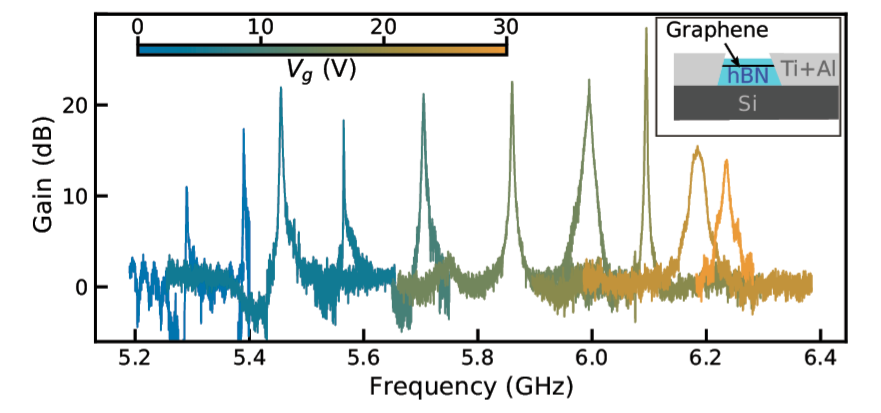- Home
- Institut Néel
- Research teams
- Technical Groups & Services
- Work at the Institut
- Partnerships
The precise measurement of weak signals is of extreme importance for various applications in quantum engineering, such as quantum computing and quantum sensors. Standard solutions based on circuits built with superconductors, that can carry a charge current without resistance below a critical temperature, lack the possibility to be controlled by an electric field. We have demonstrated that by inserting graphene, a single-layer of carbon atoms, inside a superconducting circuit we get the best of both worlds: absence of dissipation, one key property of superconductors, and electrical tunability, that is the hallmark of semiconductors.
Guilliam Butseraen, Arpit Ranadive, Nicolas Aparicio, Kazi Rafsanjani Amin, Abhishek Juyal, Martina Esposito, Kenji Watanabe, Takashi Taniguchi, Nicolas Roch, François Lefloch & Julien Renard
Nature Nanotechnology 17, 1153–1158 (2022).
DOI : 10.1038/s41565-022-01235-9
Contact: julien.renard@neel.cnrs.fr

The inset illustrates the concept of a graphene Josephson junction: a layer of graphene (encapsulated in hexagonal boron nitride, h-BN, here) is connected by titanium (Ti) and aluminum (Al).
The device lies on a silicon substrate (Si).
